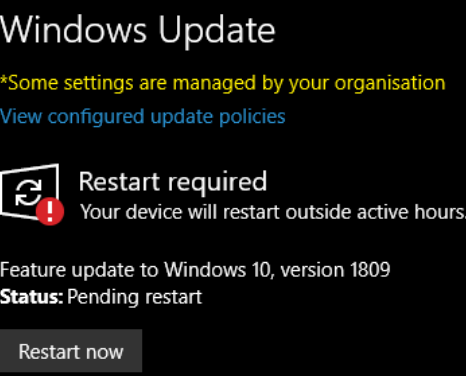Windows Updates
Introduction
Windows has two types of updates, quality & feature. Feature updates don't come up as often, & have a longer grace period before they install forcefully, so this document will predominately talk about how quality updates & updates in general are handled on our YPC Computers. You can not skip or outright prevent updates in windows 10 or later. If you don’t work with updates, they’ll ruthlessly restart your machine. This can happen during working hours if outright ignored for too long.
Quality updates come out monthly, but it's not uncommon for quality updates to be released more quickly than their standard 1 month release schedule.

When updates come out, we defer them to ensure there aren't problems with them (yes, that happens). Quality updates are deferred by 5 days, while feature updates are deferred by 30 days. This detail probably doesn't matter to you as the user.
How often does Windows Update
You should expect to see 1 to 2 updates per month. You may occasionally see 3. For most updates, they'll download outside of working hours & inform you that they're ready for 5 days, after which you'll start being warned about a restart. From here you have a 4 day grace period before windows forces you to restart.

As a rule of thumb, if you keep in mind you have just over a week to accept updates & restart after the first warning, you should be fine.
Avoid having your PC restart during working hours
1) If you see warnings, do not ignore them. Read them & respond accordingly.
2) If you see the pictured icon on the bottom right of your taskbar, it’s warning you that you’ve got a pending restart for an update. If you ignore this too long, you'll be rebooted without the option to stop it.
3) You can also check this in settings, by hitting start, typing “Updates” & clicking Check for Updates. If you see the following warning, you’re due for a restart.

Related Articles
Your new YPC Computer
Introduction The purpose of this document is to help a new user get acquainted with their new computer as well as the account's you'll be responsible for. This primarily consists of your Microsoft Account, Zoho Account, Google Account, & Legacy CRM ...Using VPN to access Shared & Personal Files
Introduction A VPN, or Virtual Private Network, is a tool that allows you to connect into a network that you aren't physically in front of. At YPC, we use this to access internal tools & documents. This guide will go over how to use your VPN to ...